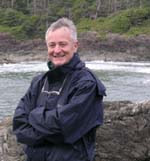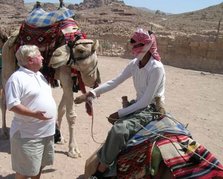BY NATASHA PADGITT
The Mayan ruins at Copán, a UNESCO World Heritage Site, are a must-see if you’re traveling in Central America. Located in Western Honduras near the Guatemalan border, Copán is the perfect weekend destination from many points in the region, offering a little bit of tourism, a little bit of nature and a lot of history and culture.My husband and I, and a few friends, took advantage of a recent long weekend to drive to Copán Ruinas from San Salvador, El Salvador, which took about five and a half hours, including a leisurely lunch stop in Metapán, near the El Salvador-Guatemala border.
If you’re based regionally or swinging through as part of a longer journey through Central America, it’s a trip you can do with minimal advanced planning, since there are many places to stay that fit a variety of budgets.
We stayed at a great bed and breakfast called La Casa de Café, which cost about U.S.$55 for a double room and included breakfast and wi-fi. The service was excellent, the B&B grounds are serene and – best of all – the views are stunning. La Casa de Café also has a massage pavilion that offers hour-long massages for $35. I definitely took advantage of this after trekking around the ruins.
The ruins themselves are about a 15- to 20-minute walk from the center of town. There are also plenty of tuk-tuks you can take. The grounds of the archaeological park themselves are much larger than what I was expecting, which was a couple piles of rocks on a field – tall piles of really old rocks on a large field – but the park is vast, with structures spread out all over the compound, not to mention a museum as well.
The entrance fee is $15 for the Parque Arqueológico Copán (the main site), $7 for the Museo de Escultura Maya (a museum where many of the original altars and artifacts are preserved and on display, as many of the structures outside are replicas) and $15 for Los Tuneles (a network of tunnels from which the tombs and temples can be seen). We didn’t hire a guide, but there are English- and Spanish-speaking guides available for about $40 per group (our group was six people).
As you can see, the entrance fees can add up. We didn’t buy tickets to access the tunnels either, but it’s always nice to leave something new for the next visit. A guide and the tunnels will definitely be on my list.
The ruins are the star of the show in Copán, but animal lovers should also set aside a couple hours for Macaw Mountain, an aviary dedicated to rescuing, preserving and breeding a variety of tropical birds. The entrance fee is $10 and a guide is free, but a tip is recommended. Hiring a guide also allows you to hold some of the birds at the end of the tour.
A trip to Copán might be worth it just to visit Sol de Copán Cerveceria y Restaurante Alemana, a Germany brewery and restaurant. The owners are a German man and his Honduran wife who brew and cook everything from scratch in-house. It’s a must-visit for both the beer (German) and food (German and Honduran). It is so good that our group went there twice in 24 hours (and we were in town for less than 48 hours). I had the best pasta I’ve ever eaten, made from scratch everyday, then topped with cheese and onions and baked.
See this site for other suggestions on how to get to Copán and where to stay in Copán.
Natasha Padgitt is a writer living in San Salvador, El Salvador, where she and her husband are posted for his first tour in the U.S. Foreign Service. A Washingtonian turned expatriate, Natasha enjoys reading (to find inspiration to write), baking (to satisfy her insatiable sweet tooth) and running (to undo the effects of baking). She blogs at La Vie Overseas about “Expat Life as a Foreign Service Wife.”














